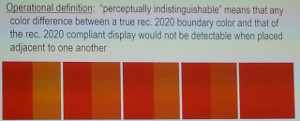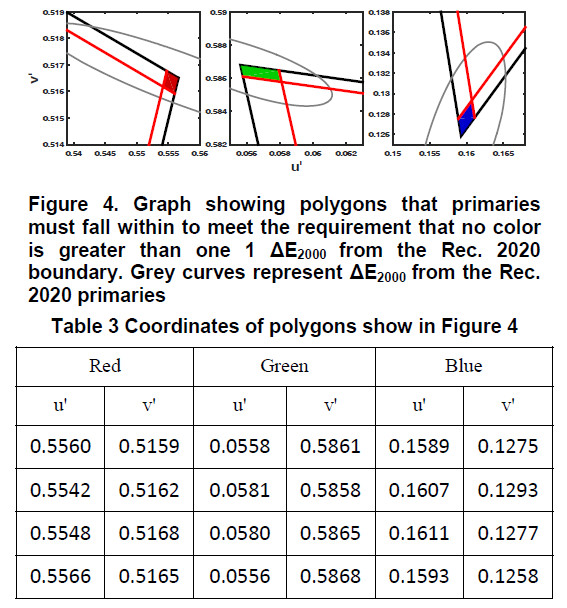One of the big issues with the 2020 color gamut is that the specification calls for primaries that are located on the spectral locus without any tolerances. That means to be technically compliant, you have to use three lasers at those wavelengths which would produce a very speckly image. At SID, 3M presented a paper that did some research to develop a tolerance range around the primaries that allows displays oriented toward content mastering to become compliant, and that would be perceptually indistinguishable within this tolerance range. Author, James Hillis, also noted that these tolerances may be different for a consumer-oriented 2020 display.

Experimentally, the 3M team set up a series of images that had squares or diamonds in the center of a larger square. Survey participants were asked to indicate if they saw this insert, which was very closely matched to the larger square in color. The goal was to determine experimentally the range of colors that were perceptually indistinguishable.
These threshold measurements support the use of CIE LAB ΔE2000 color difference formulas. The criteria for indistinguishable is 1 ΔE2000. A Mitsubishi laser was used for the testing but only for colors along the green-red boundary as the TV’s color gamut deviated significantly from 2020 in the blue. 3M chose five base colors to evaluate and went in 5-6 directions from each base color to try to find the 1 ΔE2000, or indistinguishable boundary.
There’s a lot more color science and a number of nuances in the paper that was over my head, but the company did present a suggestion for the primaries ranges in the 1976 CIE color space as shown in the figure.


